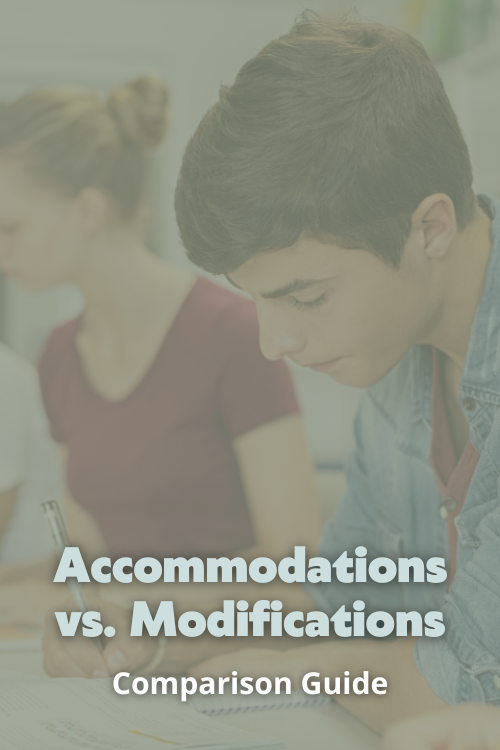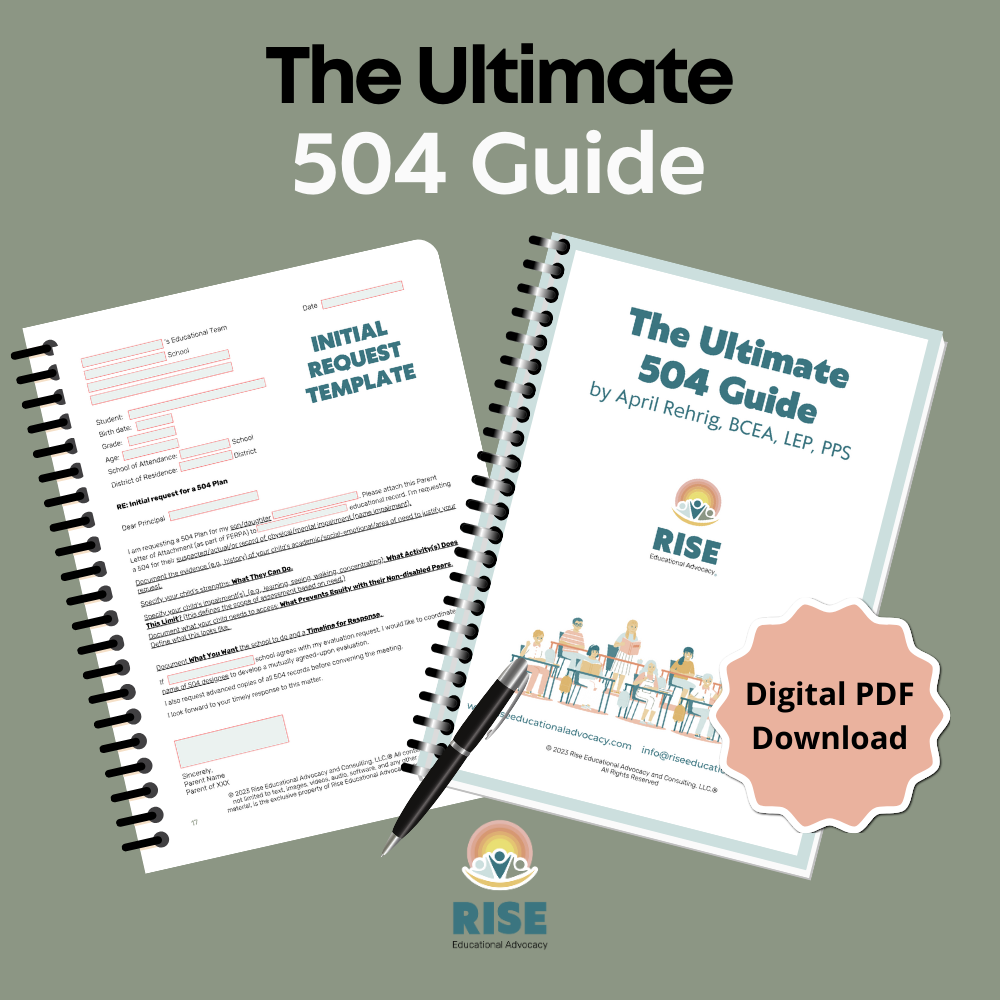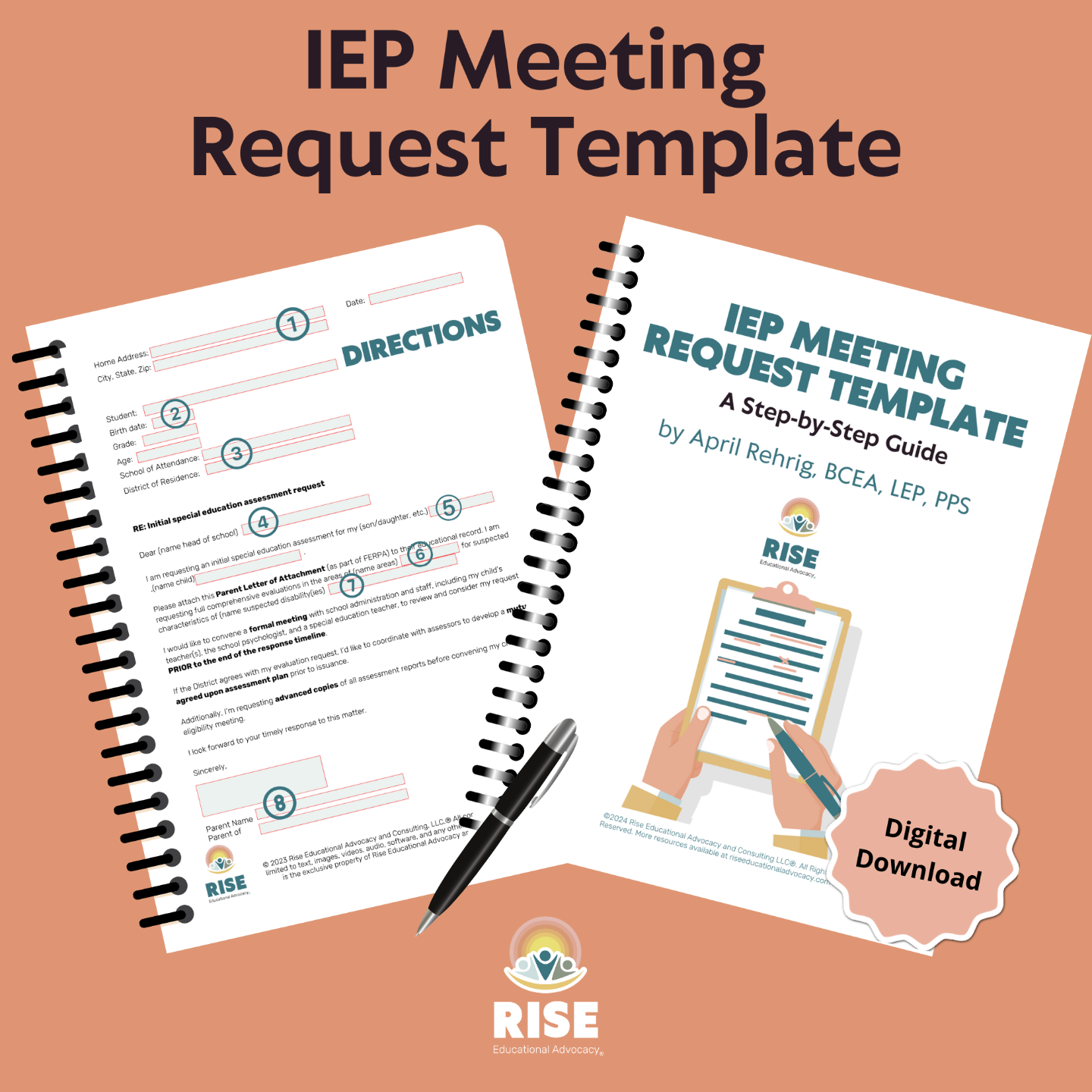
Accommodations vs. Modifications: What's the Difference?
You want the best for your student or child’s education. This couldn’t be more important when they have a disability.
Enter two of the most frequently used and least understood tools: accommodation and modification. Let’s define them and what they look like, as well as prompting and cueing. Then, follow essential strategies to deliver the best support for your child to thrive.
Accommodations: How It’s Learned
Removing Barriers to Level the Playing Field
 Accommodations adjust HOW a student learns the material. With an accommodation, students are expected to achieve the same standard as typical peers with a varied outcome. These adjustments focus on methodology and pedagogy for instructional delivery. Educators change how they teach based on the child’s unique learning needs. The goal? To level the playing field. Contrary to popular belief, accommodations do not offer “preferential treatment.” Simply put, they provide access to instruction and content, not an unfair advantage.
Accommodations adjust HOW a student learns the material. With an accommodation, students are expected to achieve the same standard as typical peers with a varied outcome. These adjustments focus on methodology and pedagogy for instructional delivery. Educators change how they teach based on the child’s unique learning needs. The goal? To level the playing field. Contrary to popular belief, accommodations do not offer “preferential treatment.” Simply put, they provide access to instruction and content, not an unfair advantage.
Prominent author and autism speaker Dr. Temple Grandin often describes accommodations as a “workaround." Accommodations allow students to participate or perform tasks without lowering standards or expectations.
Accommodation Examples:
- Decreasing # of HW problems (without altering core standards)
- Changing a student’s response style
- Reading aloud test questions
- Using a highlighter/colored pens
- Allowing scratch paper for tests
- Printing out online assignments
- Taking a picture of the board vs. using an HW planner
- Providing an extra set of textbooks
- Extended time on tests/HW/projects
- Text to speech
- Previewing study guides before exams
- Changing font/size or spacing
- Providing an alternate room for tests
Accommodations are generally organized into four subtypes: Presentation, Response, Setting, and Timing/Scheduling.
Presentation
Presentation accommodations adjust the receiving information and WHAT is presented. What does this look like? Altering a student’s mode of listening, such as visual or auditory. Perhaps a student could use cue cards instead of reading a poem from memory. Presentation accommodations also involve changing how a teacher instructs students or gives directions. For example, writing the homework on the board and then allowing a student to take a picture with their phone.
 Response
Response
Response accommodations adjust HOW a student demonstrates their knowledge. What does this look like? Altering a task or assignment modality, such as changing a written assignment to an oral one or allowing students to perform their final instead of writing an essay. Response accommodations also change how students are grouped. Kids could work in smaller groups, be placed in pairs, or be brought together as a whole. Lastly, response accommodations could involve speech-to-text, such as dictation or using a keyboard to type an essay instead of cursive.
Setting
Setting accommodations adjust WHERE students are located. What does this look like? Altering access to a specific place or location. This may involve changing seating conditions for a test or placing students near the front of the class to minimize distractions. Setting accommodations also involves physical accessibility. Offering a class on the first floor for students with mobility challenges or offering a standing desk. Minimizing distractions is also a setting accommodation, as is organizing materials. Providing a folder with tabs for “done” and “not done” would be a setting accommodation.
Timing & Scheduling
Timing and scheduling accommodations adjust WHEN something is done. What does this look like? Modifying or changing the length of time. This could involve increasing or decreasing time demands or breaking tasks into smaller parts. Timing and scheduling accommodations could include adding or removing breaks and asking students to self-monitor their progress or providing them with checklists. Modifying a student’s schedule, particularly in middle and high school, can make a huge difference. Perhaps taking Algebra first thing in the morning to align with a student’s ADHD medication or offering a sensory break after nutrition. Timing and scheduling accommodations can also involve the use of timers. Tests and exams can be increased, decreased, or broken down into different parts.
Regardless of type, accommodations are essential to helping students. They are also mandated through Section 504 in public schools. If you need help getting a 504 Plan for your child or student, check out our Ultimate 504 Guide.
Modifications: What’s Learned
Different Standards for Personalized Learning
Modifications change WHAT a student is expected to learn. Alterations are more substantial than accommodations. There are two different types of modifications: curriculum and assignment. With a curriculum modification, the core content is modified. For instance, a student is given different grade-level materials for math. With an assignment modification, instruction is significantly changed. For example, students are given a more manageable written prompt, guided through how to complete the sentence, and graded on their progress instead of their non-disabled peers.
Modifications change the expectation and learning pace instead of adhering to a one-size-fits-all approach. Students progress toward mastering the curriculum without being compared to their non-disabled peers. Modifications should only be recommended when the child’s needs substantially impair their ability to access the core curriculum. Parents and teachers must be aware that implementing modifications in an education plan often results in removal from the general education class. What does this mean? Elementary school students may have fewer opportunities to be educated with peers. They may be recommended for lower classes or have fewer expectations placed on them. This could also result in the inability to access a high school diploma or enroll in college prep classes. Teams should only recommend modifications AFTER changing accommodations and substantial changes to a child’s goals in their Individual Education Plan (IEP). Get everything you need with our 👉 DIY Meetings Workshop.
Modifications Examples:
- Simplifying HW assignments
- Decreasing answer options on multiple-choice tests
- Using coursework from a non-approved curriculum
- Leveling down tests or assignments
- Pass/no pass grading
- Simplifying language on tests or assignments
- Grading on individual progress vs. set standards
- Being excused from large projects/units or materials
What They Share
Both accommodations and modifications support student learning. They improve access and equity for students with disabilities. Equally important, both tools are available from preschool through college. Modifications and accommodations involve both cueing and prompting. Both terms are often used interchangeably and frequently misunderstood.
A prompt is direct and given before a student is asked to perform a task. Cues are quick reminders of what’s expected. They can be given either before or after a task. Cues tend to be indirect and serve as a hint, while prompts are structured and systematic. For example, a student with poor recall needs support to remember directions. A prompt involves saying the answer allowed for the student to repeat, while a cue has instructions repeated.
Parents and teachers agree that successful performance is based on how a task is completed AND the degree to which it’s performed independently. Mastering a skill is essential to generalizing knowledge. Typical students generally move towards independence quickly, whereas children with disabilities often take longer and need support to master a skill. To facilitate learning, teachers and paraprofessionals frequently use prompts and cueing. Therefore, specificity is crucial in avoiding prompt dependency and learned helplessness. Using a prompt hierarchy in meetings is essential to craft a fade-out plan with your team. Since the goal is for students to complete tasks independently, it’s equally important to map out how and when teams will fade prompts. Download our FREE👉Prompt Hierarchy for your next meeting.
How They're Different
Accommodations can be offered to ANY student, regardless of whether or not they have a formalized education plan. They are embedded into everyday teaching techniques and often naturally occur in classrooms. However, public schools can only mandate accommodations and modifications if students qualify for an IEP or 504 Plan. Read 👉 IEP vs. 504 Plan: Understand the Difference and Choose Right to Learn More. Because modifications alter the curriculum, parents and educators need to understand that their use may negatively impact a student’s ability to enroll in college-prep, honors, or Advanced Placement courses. In addition, modifying the curriculum can present challenges to students wanting a high school diploma. Students wishing to go to college should slowly pair down accommodations and modifications in high school to prepare for university accommodations and adult student expectations. For more information, read 👉 High School vs. College Disability Supports: What’s the Difference?
Knowing where accommodations and/or modifications are expected is critical. The primary spot in your IEP should be in supplementary aides and services. Needs drive what’s written in an education plan. Drop-down menus are helpful yet often counterproductive when choosing personalized support. If your child or student has an IEP, accommodations and modifications must be easily identified in the present level and goal sections. Both areas describe the setups and necessary conditions for a student to perform. They embed those how-tos throughout the IEP, resulting in a sound education plan.
Empower Your Advocacy
Now that you understand the nuances between accommodations and modifications, it’s time to decide HOW you want to implement your knowledge for your child or student. With the tools and guides you’ve been given, it’s time to move forward to strengthen your advocacy.
We’re Here to Help
Now that you understand the nuances between accommodations and modifications, it’s time to ask yourself: How do you want to move forward? You have the starting tools and resources. Do you need help? 👉 Book a FREE consultation today!
At Rise Educational Advocacy®, we work with you to get the right help for your child or student. Services include Special Education Advocacy and Parent IEP Coaching, Do It Yourself IEP Workshops and Guides, group training, and virtual support. We help families and schools navigate IEP and 504 Plans without the wait.





